Get ready to dive into the world of cosmetology, where beauty and science intertwine! From the ancient days to the present, humans have found countless ways to enhance their looks. Join us as we journey through the ages, uncovering the secrets of hairstyles, cosmetics, skincare, and more. We’ll explore how these practices have evolved alongside culture and technology, and how they’ve shaped our understanding of beauty and self-expression.
History of Cosmetology Timeline
Let’s journey back in time and explore the captivating history of cosmetology, from ancient rituals to modern innovations.
Prehistoric Times: The Dawn of Adornment
Long before written history, our ancestors likely had an eye for aesthetics. Evidence suggests they used natural pigments derived from plants and minerals to decorate their bodies. These early forms of adornment probably weren’t just about looking good; they might have played a role in expressing identity, social status, or even spiritual beliefs.
Ancient Egypt: Where Beauty Met Divinity
Fast forward to ancient Egypt, and we see cosmetics taking center stage. The ancient Egyptians were masters of crafting oils, perfumes, and makeup. Kohl, a dark pigment, was used to create dramatic eye looks, while henna served as a versatile tool for intricate body art and hair dye. Cosmetics in ancient Egypt weren’t just about vanity; they were deeply intertwined with religious rituals, social standing, and even health beliefs. Cleopatra’s iconic beauty, for instance, is often attributed to her skillful use of cosmetics and beauty rituals.
Ancient Civilizations Around the World:
The pursuit of beauty wasn’t confined to Egypt. Across the globe, other ancient civilizations were developing their own unique beauty practices.
- Ancient Greece and Rome: In these societies, women commonly used saffron and pigments made from lead to add color to their faces. Baths and manicures were also regular parts of their beauty routines, suggesting a focus on cleanliness and personal care.
- Ancient China: Pale skin and pearly white teeth were highly sought after in ancient China. They used various substances, including powdered lead (a practice now known to be harmful), to lighten their complexions.
- Mesoamerica: Ancient cultures in Mesoamerica, such as the Mayans and Aztecs, are known for their intricate use of makeup in religious ceremonies. They also practiced body modification, such as tooth filing and cranial deformation, as forms of adornment.
Early Modern Period: Experimentation and Evolution:
In parts of Europe, particularly the south, tribes started experimenting with hair dyes and early forms of soap. They also discovered the joys (or pains) of tweezing as a hair removal technique. This period saw a slow but steady evolution of beauty practices, laying the groundwork for later innovations.
The Renaissance: Beauty’s Revival
After a period of relative quiet in Europe during the Middle Ages, the Renaissance saw a resurgence of interest in cosmetics and adornment. Cosmetics became a symbol of wealth and status, especially among women. Pale skin, achieved through (sometimes dangerous) means like lead-based powders, was in vogue, along with rouged cheeks and elaborate hairstyles. This era marked a return to the opulence and artistry in beauty that had been prevalent in ancient civilizations.
19th Century: Science Stepped In:
The 19th century brought about a revolution in chemistry, and this spilled over into the world of beauty. Scientists started creating new synthetic dyes and perfumes, making a wider range of products available to the public. This era also saw the rise of dedicated beauty salons, suggesting that beauty was becoming more of a social practice and a specialized service.
Early 20th Century: The Birth of Modern Beauty:
The 20th century witnessed an explosion in the beauty industry. Modern cosmetics, as we know them, became mainstream. Makeup, skincare, and hair products were mass-produced and marketed widely. This period also led to the professionalization of cosmetology, with formal schools and training programs emerging to meet the growing demand for skilled practitioners. Iconic figures like Max Factor emerged during this era, revolutionizing the industry with innovations such as waterproof makeup.
21st Century: Technology Takes the Reins:
Today, technology is a driving force in cosmetology. Lasers offer seemingly magical solutions for hair removal and skin rejuvenation. Injectables like Botox have become increasingly common, as have sophisticated skincare ingredients like retinol and hyaluronic acid. There’s also a growing emphasis on natural and organic products, reflecting a desire for both beauty and sustainability.
Looking Ahead: A Future of Possibilities:
So, what’s next for cosmetology? It’s likely that technology will continue to play a huge role, potentially leading to personalized beauty solutions tailored to our individual genetic makeup. We might see innovations in sustainable packaging, ethically sourced ingredients, and a greater focus on inclusivity and diversity within the beauty industry. One thing’s for sure: the quest for beauty is a constant, and the world of cosmetology will undoubtedly continue to evolve in fascinating and unpredictable ways.
What is the history of cosmetology?
We’ve talked about what cosmetology is all about, but did you ever wonder where it all began? Turns out, humans have been interested in looking and feeling good for a really long time! We’re talking going way back to the ancient world.
Take the ancient Egyptians, for example. They were basically obsessed with beauty! You know that dramatic eye makeup you sometimes see? Yeah, that smoky eye look is inspired by the kohl the Egyptians used. And they were big on hair dye too, using henna to get the color they wanted. They even used perfumes and fragrant oils for skincare – talk about being ahead of their time!
Meanwhile, over in ancient Greece, women were all about enhancing their natural features with makeup. They used saffron and lead-based pigments (though thankfully we have safer options now!). Baths and manicures were a regular part of their beauty routine.
Across the globe, in the Far East, pale skin was the epitome of beauty. In China, they used powdered lead to lighten their complexion – a practice we now know can be harmful. And pearly white teeth were highly sought after too.
Even in the Americas, ancient cultures like the Mesoamericans had their own unique beauty practices. They used intricate makeup designs for religious ceremonies and even practiced body modifications as a form of adornment.
Fast forward to the Renaissance, and cosmetology had a major comeback! Women went all out with makeup and elaborate hairstyles, proving that some things never go out of style!
The 19th century saw a boom in new hair care and makeup products – this is when cosmetology as a profession really started taking off. Schools dedicated to teaching the art of beauty began to pop up.
Then came the 20th century, and boy did things change! Technology revolutionized the beauty industry, with new chemicals and inventions like hair dyes and perfumes hitting the market.
Today, cosmetology is a constantly evolving field. New trends emerge all the time, and we’re always finding more sustainable and ethical ways to practice beauty. One thing’s for sure, though: the desire to look and feel good is a constant throughout history!
What is the brief history of cosmetics?
We’ve already talked about how popular cosmetics are today, but did you know that people have been using them for ages? It’s true! Let’s dive into the fascinating history of cosmetics, going all the way back to ancient times.
Way Back When in Ancient Egypt: Imagine Cleopatra with her striking eye makeup – that look was all the rage back then! The ancient Egyptians were crazy about cosmetics. They used kohl, which is like a dark powder, to line their eyes. It wasn’t just about beauty, though. Some experts believe they also used it to protect their eyes from the harsh desert sun. They also used henna to color their hair and fragrant oils to keep their skin moisturized. These folks were practically chemists, creating all sorts of makeup like eye shadows, rouges, and perfumes – they were way ahead of their time!
Ancient Civilizations Around the World: It wasn’t just the Egyptians who were into beauty products. Over in ancient Greece and Rome, people used saffron and pigments made from lead to add a pop of color to their faces. Baths and manicures were a regular part of life! In China, having pale skin and pearly white teeth was considered super stylish. They even used powdered lead as a skin lightener. And let’s not forget about the amazing Mesoamerican cultures, where they used elaborate makeup for rituals and even modified their bodies for beauty purposes.
Fast Forward to the Renaissance and Modern Era: During the Renaissance period, cosmetics were like a status symbol – think of it as owning the latest designer handbag today. Women went all out with makeup and fancy hairstyles to show off their wealth. Then, in the 1800s, things really started to change. We saw the invention of hair care and makeup products as we know them today, and even the first cosmetology schools popped up. The 20th century brought about even more changes, thanks to technology. We’re talking about new chemicals and ingredients, hair dyes that actually worked, and perfumes that could make you swoon!
Cosmetics Today and Beyond: These days, the world of cosmetics is always evolving. New technologies are popping up all the time, and what’s considered beautiful is constantly changing too. One thing’s for sure – more and more people are starting to care about the environment and want their cosmetics to be eco-friendly. It’s an exciting time to be a fan of all things beauty!
Let’s Wrap It Up:
- Cosmetics have been a part of human culture for as long as we can remember – we’re talking thousands of years!
- Ancient civilizations all over the world were pioneers in the world of makeup and beauty.
- As society changes, so do our beauty routines and the products we use.
- Today, the cosmetics industry is all about creating innovative products, being kind to our planet, and celebrating everyone’s unique beauty.
Even with all we know, scientists and historians are still discovering new things about the history of cosmetics. It’s incredible to think about how something we use in our everyday lives has such a long and fascinating past!
When Was Cosmetologist Invented?
Picking up where we left off, it’s clear that making ourselves look and feel fabulous has been important to humans for a long time. It’s not like someone just woke up one day and invented the “cosmetologist” job title! Instead, the very idea of a cosmetologist, someone skilled in beauty practices, has evolved over centuries, building upon the ingenuity and creativity of diverse cultures across the globe.
Think about it: our ancient ancestors weren’t strolling through aisles of makeup and hair products. Their beauty routines were deeply intertwined with the natural world around them. They experimented with crushed berries for color, plant extracts for skincare, and animal fats for, well, who knows what!
While pinpointing the exact moment a “cosmetologist,” as we understand it today, emerged is impossible, we can trace the profession’s roots back to these early innovators. Ancient civilizations didn’t just stumble upon beauty secrets; they actively sought them out, refined techniques, and passed down their knowledge through generations. This slow but steady accumulation of practices laid the groundwork for the sophisticated cosmetology industry we know and love today.
Even with all our modern advancements, we still owe a debt to these pioneers. They established the very foundation of beauty practices, proving that humans have always had a desire to enhance their appearance – a desire that continues to drive innovation and creativity within the field of cosmetology.
What era had the greatest influence on cosmetology?
Picking the absolute biggest game-changer in the history of cosmetology is tough—it’s like choosing a favorite child! Each period added its own flair to beauty trends. Let’s dive into a few contenders for the “most influential” title and you can decide for yourself!
Ancient Times – The OG Beauty Gurus
Think way, way back to ancient Egypt. These folks weren’t just messing around with makeup for fun (though they did like to look good!). They believed makeup had spiritual power, and it was a status symbol too. Kohl-rimmed eyes weren’t just trendy; they were believed to ward off evil! Henna for hair, perfumed oils for skin—they were all about that natural, luxurious vibe. And don’t forget the Greeks and Romans—they were obsessed with skincare and perfumes!
The Renaissance – Makeup Makes a Comeback
After a bit of a quiet period in Europe, the Renaissance was like, “Beauty is back, baby!” Cosmetics became a sign of wealth and power, especially for women. Think pale skin (thanks to lead-based powders—yikes!), rouged cheeks, and elaborate hairstyles. This era was all about looking fancy.
The 1800s – Science Gets Involved
This is where things start to look a bit more like the beauty industry we know today. The 1800s saw the rise of commercially produced makeup and hair care—no more mixing up concoctions at home! Cosmetology schools started popping up, and people began to see beauty as a profession, not just something you did on the side.
The 20th Century – Innovation Explosion!
Hold onto your hats because the 20th century brought a whirlwind of change. Hair dye? Check! Perm machines? You got it! Electric hair dryers? Everywhere! This was the era of big, bold looks and constant innovation. Makeup artists like Max Factor became household names, and cosmetics were marketed to everyone, not just the wealthy.
Today – It’s All About You
Today’s beauty scene is all about embracing individuality. We’re seeing a move towards more natural looks, sustainable products, and celebrating diversity in all its forms. Technology is playing a huge role, with things like laser hair removal and non-invasive treatments becoming increasingly popular.
So, who wins the crown for most influential?
It’s a tough call! Ancient civilizations laid the groundwork, the Renaissance brought back the glam, the 1800s got the industry going, and the 20th century brought us the tools we know and love today. Honestly, it’s the combination of all these periods that’s made cosmetology what it is today—a dynamic, ever-evolving field that’s all about helping people look and feel their best.
What are three interesting facts about cosmetology?
Okay, so we’ve been talking about cosmetology, right? And it’s way more than just a trip to the salon. It’s a whole thing with a history that stretches waaaay back. Let’s dive into some seriously cool trivia about this art of beauty:
- Ancient Egyptians were ALL about that makeup life. We’re talking way, way back – think Cleopatra and pyramids! They were rocking kohl eyeliner and eyeshadow like it was nobody’s business. It wasn’t just them, other ancient cultures like the Greeks, Romans, and even the Chinese were all about using makeup and beauty treatments to look good and express their cultural identities.
- Cosmetology is like the Swiss Army knife of beauty. Seriously, it covers everything you can imagine! We’re talking skincare to keep that glow going, hair styling that would make Rapunzel jealous, makeup skills that would impress even the biggest beauty bloggers, nail art that’s basically tiny masterpieces – the list goes on and on! It’s not just about vanity either, a lot of these practices have to do with health, hygiene, and even cultural traditions.
- Technology is changing the cosmetology game BIG time. Remember when hair dye and perms were like, revolutionary? Yeah, technology has come a long way! Now we’re talking lasers, injectables, and all sorts of high-tech treatments that can seriously turn back the clock. And who knows what amazing innovations are coming next? It’s a pretty exciting time to be into beauty!
So there you have it – cosmetology is more than meets the eye (or the mirror, for that matter!). It’s ancient, it’s diverse, and it’s constantly evolving with new trends and technologies. Keep exploring – who knows what other fascinating facts you’ll uncover!
What is the Root of Cosmetology?
Cosmetology, the art of making ourselves look good, has been around for ages. It’s not just about looking pretty; it’s about that primal urge we all have to spiff ourselves up, to feel confident and express ourselves. Think back to the Egyptians with their kohl eyeliner and henna tattoos or the Romans and their luxurious baths and perfumes. Cosmetology has always been there, adapting and evolving right alongside our cultures and technologies.
It’s pretty fascinating to think about how the idea of beauty itself has changed over time. What one culture considers beautiful, another might find strange or even undesirable. And that’s the thing about cosmetology; it’s a mirror reflecting our values and beliefs about beauty, and those are always in flux.
Today, cosmetology is more innovative than ever. We’re seeing sustainable practices, and personalized approaches are taking center stage, showing just how much this ancient art form continues to adapt and grow. It’s exciting to imagine what new trends and technologies await us in the ever-evolving world of cosmetology!
What is the history of beauty salons?
Picking up where we left off, it’s fascinating to think that these early practices were like the very, very distant ancestors of the modern beauty salon! Instead of sleek salons with fancy chairs, imagine people just hanging out, gossiping, and helping each other look their best. It makes you realize that humans have always cared about their appearance, no matter the time or place.
As centuries rolled by, these beauty rituals didn’t just stay the same. They evolved and spread, morphing into something new with each generation. Fast forward to the 1800s and the rise of the middle class. Suddenly, more people had some extra money in their pockets and free time to enjoy. This sparked a huge demand for personal care services – kind of like how we all crave a little pampering now and then!
The year 1902 marks a pivotal moment: the first modern beauty salon, dedicated mainly to hair care, opened its doors in the United States. Then, the early 1900s brought a wave of new technology, and with it, innovations that would completely transform the beauty world as we know it. Remember Max Factor? He’s the mastermind behind waterproof makeup, initially designed for Hollywood stars. This invention alone sent ripples through the industry, making glamorous looks achievable for everyday women and solidifying makeup’s place in beauty routines everywhere.
Of course, it wasn’t just technology driving change. Cultural shifts played a massive role, too. The feminist movement, for instance, challenged the very notion of beauty standards. Women began questioning why society dictated they had to look a certain way and started embracing natural beauty. It was a powerful movement that continues to shape how we view beauty today.
Fueled by passionate customers and ever-evolving ideas, the beauty industry boomed throughout the 20th and into the 21st century. New products and services popped up left and right, catering to a diverse range of needs and preferences. Think about it – what started as basic hair and makeup services now includes everything from facials and massages to intricate nail art and even permanent makeup!
Today, beauty salons are about so much more than just changing how we look. They’re places of relaxation, self-expression, and connection. It’s where we go to unwind, try something new, or simply enjoy a little “me” time. And as we look to the future, one thing’s for sure – the beauty industry will keep evolving, surprising us with new trends, techniques, and innovations. Who knows what amazing discoveries and creations are just around the corner?
Why is cosmetology called cosmetology?
So, we’ve been talking about all the cool things cosmetology involves, but have you ever wondered why it’s called that? It’s a pretty fancy word, right? Well, it turns out it has roots in ancient Greek! The word “cosmetology” actually comes from the Greek term “kosmetikos,” which basically means “skilled in beautifying.” And if you break it down even further, “kosmetikos” comes from “kosmos,” meaning “order” or “beauty.”
Think about it – when you get a haircut or a facial, you’re essentially bringing order and beauty to your appearance. And that’s exactly what the ancient Greeks were getting at! They saw beauty as something harmonious and balanced, and “cosmetics” were the tools to achieve that.
So, the next time you hear “cosmetology,” remember it’s not just a fancy word for makeup and hairstyling. It’s a practice rooted in history, a pursuit of enhancing one’s natural beauty and well-being.
When did beauty first start?
We’ve already talked about how people try to look and feel their best in so many different ways throughout history. But have you ever wondered, when did beauty first start? It’s a bit like trying to pinpoint the beginning of a river – it’s tough because it’s always been flowing in some form or another!
Think about it: humans have probably always cared about how they look to others, going way back to prehistoric times. Imagine early humans decorating themselves with feathers, flowers, or even colorful dirt! These acts, though simple, were likely driven by a desire to stand out, attract a mate, or express something about themselves.
While we don’t have written records from those times, archaeologists have discovered tools and pigments that suggest people were using makeup as far back as 100,000 years ago! We’re talking about ochre for red pigments, charcoal for black, and even shiny minerals to add a touch of sparkle.
Fast forward to the ancient Egyptians, and things start to get really interesting. They took beauty to a whole new level. They weren’t just adorning themselves; they were developing sophisticated cosmetics and perfumes. Think kohl for defining those mesmerizing eyes, beeswax for lip balms and creams, and henna for temporary tattoos and hair dye. And let’s not forget their love for fragrance! They used perfumes made from flowers, herbs, and spices to create captivating scents.
The desire to look and feel good has been a constant throughout human history. It’s woven into the fabric of who we are, from those early humans adding a splash of color to their faces to the intricate beauty rituals of ancient civilizations. And guess what? That desire is still going strong even today!
What is the Significance of Cosmetology?
We’ve already talked about how cool cosmetology is, but let’s dive a little deeper into why it matters so much. It’s more than just making people look good – it’s a whole thing intertwined with history, culture, and even our own sense of self.
Think about it: people have been trying to enhance their looks for ages. Way back in ancient Egypt, they were all about that kohl and henna life, using it not just for beauty but also as part of their rituals and to show off their status. Fast forward a bit, and you’ve got the Greeks and Romans rocking their own beauty routines, with each civilization adding its own flavor to the mix.
And here’s the thing – cosmetology acts like a mirror reflecting the trends and beliefs of the time. During the Renaissance, it was all about looking glam and wealthy, while the Victorians were more into natural stuff and feeling good inside and out. Then boom – modern technology comes along and changes the game completely, bringing us all sorts of fancy tools and treatments.
But beyond the historical and cultural stuff, cosmetology is also about you – the individual. It’s a way to express your own style, whether you’re into bold looks or something more natural. When you feel good about how you look, it can boost your confidence and make you feel amazing inside and out.
Let’s not forget the impact cosmetology has on the world’s economy. The beauty industry is massive, creating tons of jobs and encouraging innovation in how things are made and sold.
So, what’s the takeaway?
- Cosmetology has deep roots: It’s been around for centuries, evolving alongside different cultures.
- It reflects who we are: The way we approach beauty says a lot about our values and what we find important.
- It’s all about feeling good: Cosmetology helps people express themselves and feel confident in their own skin.
- It’s a big deal economically: The beauty industry is a global powerhouse, constantly growing and changing.
It’s worth remembering that our understanding of beauty and the role cosmetology plays is constantly evolving. What’s considered fashionable or desirable changes over time, and new research is always emerging. What we know for sure is that cosmetology will likely continue to fascinate and empower us for years to come.
Delve into the history of papermaking’s remarkable timeline, where innovation and evolution intertwined to craft the paper we know today. Uncover the history of revivals’ transformative epochs, where religious fervor sparked cultural awakenings and reshaped societal norms. Explore the history of the Eucharist’s profound evolution, witnessing the sacrament’s profound impact on Christian faith and practice throughout the ages.
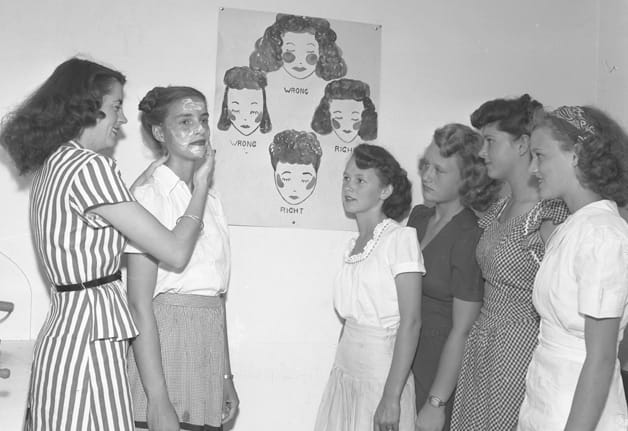
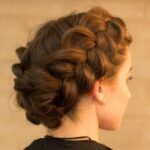

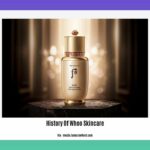
![[HISTORY OF WHOO SINGAPORE] Unveiling the Secrets of Ancient Korean Court Beauty Rituals history-of-whoo-singapore_2](https://www.lolaapp.com/wp-content/uploads/2023/12/history-of-whoo-singapore_2-150x150.jpg)
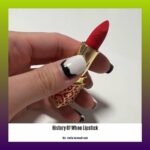
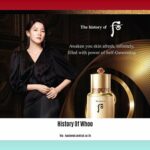






2 thoughts on “A Timeline of Cosmetology Through the Ages”
Comments are closed.